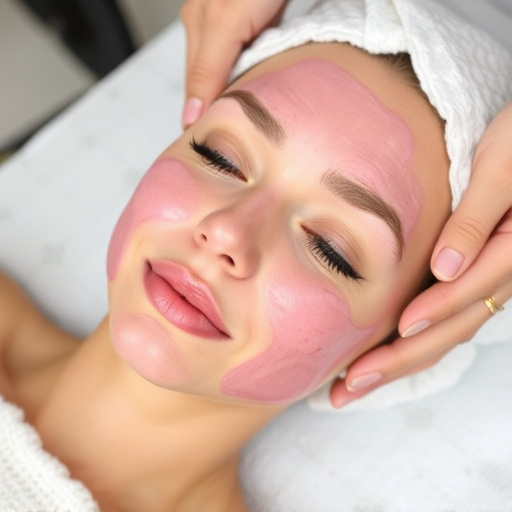Unveiling the Cost of Hair-Free Skin Solutions: A Comprehensive Guide
The growing demand for long-term hair free skin drives a shift from temporary methods towards advanc…….
Welcome to an exploration of a growing trend that is transforming the global skincare and beauty industry—Hair Free Skin. This concept, which advocates for smooth, hairless skin as a desirable aesthetic, has sparked both fascination and debate. In this comprehensive article, we will delve into every aspect of this phenomenon, from its historical roots to its future potential. By the end, readers will gain a profound understanding of the global impact, economic implications, technological innovations, and the overall significance of achieving and promoting hair-free skin.
Definition: Hair Free Skin refers to a skincare regime and aesthetic ideal that emphasizes smooth, hairless complexions. It involves various methods to remove or reduce body hair, focusing on achieving a sleek and polished look. This concept has evolved beyond mere vanity, becoming a cultural phenomenon with wide-reaching implications.
Historical Context: The pursuit of hair-free skin has deep historical roots. Ancient civilizations like Egypt valued smooth skin, as evidenced by their extensive use of exfoliants and depilatory creams. In the 19th century, as personal grooming practices improved, women began to shave legs, marking an early step towards modern hair-removal techniques. The 20th century saw a surge in hair removal products, with waxes, creams, and later, laser treatments, becoming popular. Today, Hair Free Skin represents a refined and increasingly globalized trend, driven by both personal preference and societal influences.
Significance: This trend holds immense importance for several reasons:
Hair Free Skin has become a global phenomenon, with varying degrees of popularity and acceptance across regions. Here’s an overview of its international influence:
| Region | Trends and Popularity | Cultural Influences |
|---|---|---|
| North America | Highly popular, driven by media and social influence. Laser hair removal is a dominant trend. | Emphasis on individual expression and body positivity has led to diverse acceptance of hair removal choices. |
| Europe | Widespread adoption, with regional variations. Waxing is popular in many European countries. | Cultural differences in beauty standards contribute to varying levels of hair removal practices. |
| Asia | Growing trend, particularly among younger generations. Threading and laser treatments are gaining popularity. | Traditional and modern influences blend, creating unique approaches to skincare and beauty. |
| Latin America | Increasingly popular, with a focus on achieving a smooth, polished look. | Globalization and media exposure play significant roles in shaping beauty trends. |
| Middle East | Highly sought after, especially for special occasions. Advanced technologies are widely available. | Cultural traditions and modern influences merge, offering diverse hair removal practices. |
Key Trends:
The Hair Free Skin market is a significant economic sector, attracting substantial investments and showcasing impressive growth rates.
Market Dynamics:
Investment Patterns:
Economic Impact:
Technological breakthroughs have been pivotal in shaping the Hair Free Skin landscape, offering safer, more effective, and accessible solutions.
Laser Hair Removal Revolution:
Advanced Waxing Techniques:
Depilatory Creams: Evolving Formulas:
AI-Assisted Hair Removal:
The Hair Free Skin industry operates within a regulatory framework designed to ensure safety, ethical practices, and consumer protection.
Key Policies and Regulations:
Challenges and Compliance:
Despite its popularity, Hair Free Skin faces several challenges and criticisms that require thoughtful consideration and strategic solutions.
Main Issues:
Strategic Solutions:
Let’s explore a few case studies that highlight successful applications of Hair Free Skin practices, offering valuable insights into their impact.
Case Study 1: Laser Hair Removal for Medical Conditions
A 32-year-old patient with excessive hair growth due to a hormonal imbalance sought laser hair removal to alleviate her discomfort and improve her quality of life. After a series of treatments, she experienced significant reduction in unwanted body hair, leading to increased confidence and improved social interactions. This case demonstrates the medical benefits of Hair Free Skin practices, addressing physical discomfort and enhancing patients’ overall well-being.
Case Study 2: Waxing for Special Occasions
In a cosmopolitan city, many individuals prepare for special events like weddings or festivals by opting for professional waxing treatments. A 25-year-old bride-to-be chose a salon offering advanced hard wax techniques to ensure a smooth, long-lasting result on her big day. This example illustrates how Hair Free Skin practices contribute to significant moments in people’s lives, boosting their confidence during memorable occasions.
Case Study 3: Community Outreach for Affordable Hair Removal
A non-profit organization launched an initiative to provide affordable hair removal services to low-income communities. They partnered with local salons and trained volunteers, offering discounted or free treatments. This program addressed accessibility issues, enabling individuals from diverse economic backgrounds to embrace Hair Free Skin practices and boost their self-esteem.
The Hair Free Skin industry is poised for continued growth and innovation, driven by technological advancements, shifting consumer preferences, and a globalized market. Here are some potential areas of focus:
Hair Free Skin represents a significant trend in the global skincare and beauty industry, reflecting evolving aesthetic preferences and cultural influences. As it continues to shape personal grooming practices, it is essential to approach this phenomenon with a nuanced perspective. By understanding its historical context, economic implications, technological advancements, and challenges, we can fully appreciate its impact and navigate its future trajectory.
The journey towards achieving and promoting Hair Free Skin should be guided by ethical considerations, consumer protection, and a commitment to body positivity. As the industry evolves, ongoing dialogue between consumers, professionals, regulators, and researchers is crucial to ensure that this trend remains a positive force for self-expression and confidence, while also addressing associated challenges.
Q: Is hair removal always necessary or desirable?
A: The decision to remove hair is a personal choice. While some individuals prefer smooth skin, others embrace their natural body hair as a part of their identity. It’s essential to respect individual preferences and promote body positivity.
Q: Are there any health risks associated with hair removal methods?
A: When performed correctly by professionals or followed safely at home, common hair removal methods carry minimal health risks. However, incorrect practices can lead to skin irritation, infections, or other complications. Always follow instructions and consult experts for guidance.
Q: Can Hair Free Skin be a form of self-care?
A: Absolutely! Achieving smooth skin through safe, effective methods can be an act of self-care, promoting relaxation and boosting self-esteem. It’s about feeling confident and comfortable in one’s own skin.
Q: How can I choose the best hair removal method for me?
A: Consider your skin type, hair growth pattern, budget, and desired results. Consult professionals or research thoroughly to make an informed decision. Sample sizes and patch tests are valuable tools to assess suitability before committing to a specific method.

The growing demand for long-term hair free skin drives a shift from temporary methods towards advanc…….

Hair Free Skin: More than just aesthetics, achieving smooth, hairless skin offers numerous benefits……..